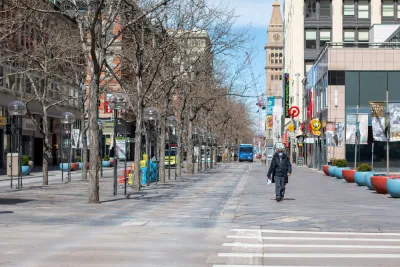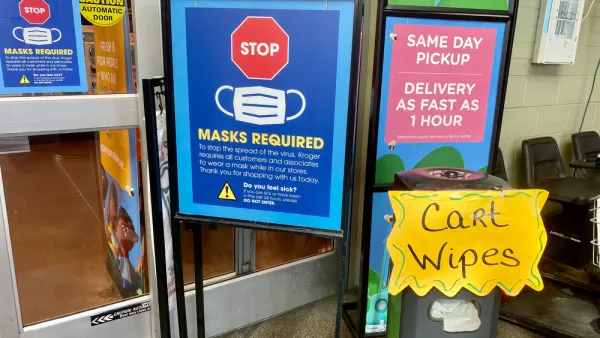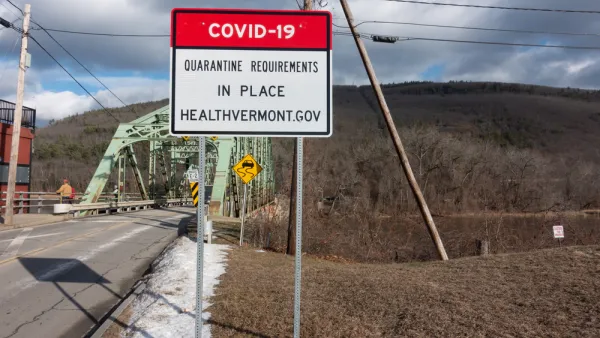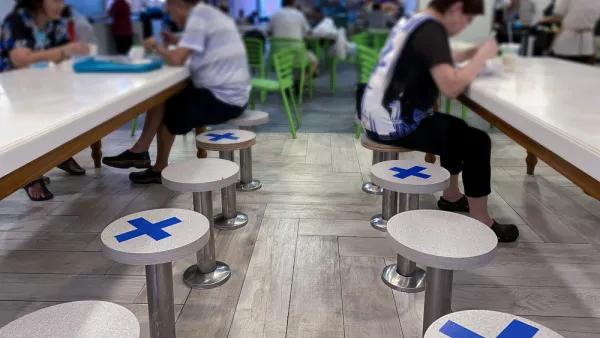In a sign that the pandemic is far from over, Colorado reactivated its crisis standards of care for staffing of health care systems on Nov. 9 as infections increased modestly nationwide. Gov. Polis made all vaccinated adults eligible for a booster.

"The pandemic isn’t over," wrote The Washington Post's health policy reporter, Yasmeen Abutaleb, and science and politics reporter, Joel Achenbach, in a provocatively titled article on Oct. 31 that suggested that time was fast-approaching.
But new cases nationally have dropped below 75,000 a day, less than half the number in August. The United States will soon reopen land borders to vaccinated visitors and lift several international travel restrictions.
Eleven days later, The Washington Post coronavirus tracker shows the seven-day average of daily new cases at just over 76,000, a 7% increase in the past week. In a rare alignment, The New York Times tracker shows the same percentage increase over the last two weeks, suggesting a plateau may have been reached, if only temporarily.
There could still be a winter surge since respiratory viruses thrive when people huddle in heated rooms. Some experts said they expect at least a modest uptick in infections over the next few weeks. Last year’s brutal winter wave of infections, which peaked in January, was just getting rolling at this point on the calendar.
Western surge
"Hospitals in some parts of the U.S. are already starting to see the impact of an autumn wave of Covid-19 infections, the latest sign that the health-care system still faces serious pressure from the virus, even in places that have achieved relatively high vaccination rates," report Jonathan Levin and Vincent Del Giudice for Bloomberg Prognosis on Nov. 11 (source article).
Intensive-care unit beds occupied by Covid-19 patients are climbing in 12 states from two weeks earlier, with most of them in a contiguous strip running from Arizona and New Mexico, through the Great Plains and into Minnesota. In several Western states, many doctors and nurses haven’t caught their breath from the last round of infections.
Which brings us to Colorado
"Citing burnout and dwindling ranks of workers, Colorado has activated a 'crisis standards of care' hospital staffing plan giving the health care industry broad authority to fill personnel gaps as Covid-19 cases surge statewide, officials announced Tuesday," reported Del Giudice on Nov. 9.
Colorado’s surge in cases, mainly among the unvaccinated, has led to a shortage of “staffed hospital beds” with intensive care unit bed availability at less than 100 for a state with a population of 5.7 million. Colorado’s hospitals have also activated a mutual aid plan allowing statewide patient transfers to ease crowding even with 80% of eligible state residents having received at least one vaccine dose.
According to The New York Times coronavirus tracker, 62% of the population is fully vaccinated, 3% higher than the national average.
Boosters for all
Two days after authorizing the Colorado Department of Public Health and Environment to reactivate the crisis standards, originally written early in the pandemic in April 2020, Gov. Jared Polis signed an executive order [pdf] making every vaccinated adult eligible for a booster shot, superseding the Centers for Disease Control and Prevention's eligibility guidelines by "declaring Colorado as high risk for exposure or transmission of COVID-19."
"The order is meant to help protect public health, reduce virus transmission, preserve hospital capacity and alleviate the stress on health care workers from the COVID-19 pandemic in Colorado," reported Jake Shapiro for The Denver Post on Nov. 11.
Of the 1,431 people in a Colorado hospital with a confirmed case of COVID-19, 80% are unvaccinated. The governor is urging Coloradans to get any vaccine immediately.
The Post reported earlier that "[n]ew modeling...showed more than 2,000 people could be hospitalized with the virus across the state by year’s end, surpassing the high point of last fall’s deadly wave."
While the unvaccinated are most at risk for severe disease, the vaccines do not ensure full protection from the virus due in part to waning immunity.
Massachusetts breakthrough cases and hospitalizations
The percentage of vaccinated patients hospitalized with COVID in Massachusetts is considerably higher than in Colorado due to its higher vaccination rate: 70% of the population is fully vaccinated, tied with Puerto Rico in having the sixth-highest level after Guam and Vermont with 72%, and Rhode Island, Maine, and Connecticut with 71%, according to the Times tracker.
NBC Boston reported on Nov. 10 that breakthrough infections rose 44% from the preceding week. On Nov. 9, they reported that of the 515 people hospitalized with COVID, 181, or 35%, were vaccinated.
Headed for endemicity
As with Alaska and Idaho that recently activated the crisis care standards, Gov. Polis did not order any restrictions to slow transmission despite Colorado having the nation's second-highest daily case incidence, 65 per 100,000 people, after North Dakota, according to the Times tracker on Nov. 11. The national average is 22 per100k.
The political reluctance to take steps to mitigate spread, particularly in blue states, reflects what Abutaleb and Achenbach wrote earlier in The Washington post—the pandemic may be winding down.
With most people vaccinated and infection rates dropping, the United States has entered a new phase of the pandemic in which people are adapting to the persistent presence of an endemic but usually nonlethal pathogen. They really have no choice. The virus isn’t going away.
Related posts in Planetizen:
-
Boosters and Breakthroughs in Vermont, October 4, 2021
-
Alaska Activates Crisis Standards of Care, September 27, 2021
-
The Pandemic Crisis Is a Hospital Crisis, September 23, 2021
-
Louisiana's Health Care System on Brink of Collapse, August 26, 2021
FULL STORY: Hospitals in Western U.S. Under Siege as Covid-19 Packs ICUs

National Parks Layoffs Will Cause Communities to Lose Billions
Thousands of essential park workers were laid off this week, just before the busy spring break season.

Retro-silient?: America’s First “Eco-burb,” The Woodlands Turns 50
A master-planned community north of Houston offers lessons on green infrastructure and resilient design, but falls short of its founder’s lofty affordability and walkability goals.

Delivering for America Plan Will Downgrade Mail Service in at Least 49.5 Percent of Zip Codes
Republican and Democrat lawmakers criticize the plan for its disproportionate negative impact on rural communities.

Test News Post 1
This is a summary

Test News Headline 46
Test for the image on the front page.

Balancing Bombs and Butterflies: How the National Guard Protects a Rare Species
The National Guard at Fort Indiantown Gap uses GIS technology and land management strategies to balance military training with conservation efforts, ensuring the survival of the rare eastern regal fritillary butterfly.
Urban Design for Planners 1: Software Tools
This six-course series explores essential urban design concepts using open source software and equips planners with the tools they need to participate fully in the urban design process.
Planning for Universal Design
Learn the tools for implementing Universal Design in planning regulations.
EMC Planning Group, Inc.
Planetizen
Planetizen
Mpact (formerly Rail~Volution)
Great Falls Development Authority, Inc.
HUDs Office of Policy Development and Research
NYU Wagner Graduate School of Public Service





























